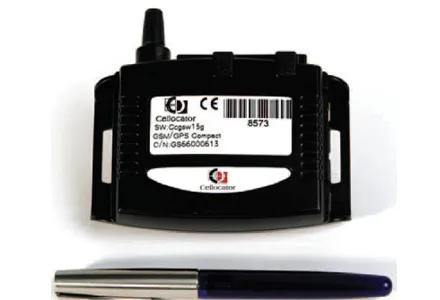The sophisticated Cellocator unit from Pointer Telocation allows fleet managers to listen to what happens inside a vehicle during emergency situations. A panic button can be used by the vehicle driver to activate the hands-free unit, which can also provide voice communications between the driver and a fleet manager in the office.
February 23, 2012
Read time: 2 mins

The sophisticated Cellocator unit from 3128 Pointer Telocation allows fleet managers to listen to what happens inside a vehicle during emergency situations. A panic button can be used by the vehicle driver to activate the hands-free unit, which can also provide voice communications between the driver and a fleet manager in the office.
The unit eliminates the need for a hand-held mobile phone and is said to allow two-way voice communications using its microphone and speaker. The vehicle driver can call or respond using a service button, or press the panic button in an emergency. There is also an auto answer mode that allows a call to get through without driver involvement. This provides a useful safety measure and the destination of each call is programmed using a predefined number.
The Cellocator unit also allows silent monitoring so that the caller can listen to the driver and any sound in the cab but has the speaker on mute. The unit controls the transmission of the voice from the car to the GSM network and also controls ringer volume, speaker volume and microphone gain.
The unit eliminates the need for a hand-held mobile phone and is said to allow two-way voice communications using its microphone and speaker. The vehicle driver can call or respond using a service button, or press the panic button in an emergency. There is also an auto answer mode that allows a call to get through without driver involvement. This provides a useful safety measure and the destination of each call is programmed using a predefined number.
The Cellocator unit also allows silent monitoring so that the caller can listen to the driver and any sound in the cab but has the speaker on mute. The unit controls the transmission of the voice from the car to the GSM network and also controls ringer volume, speaker volume and microphone gain.







